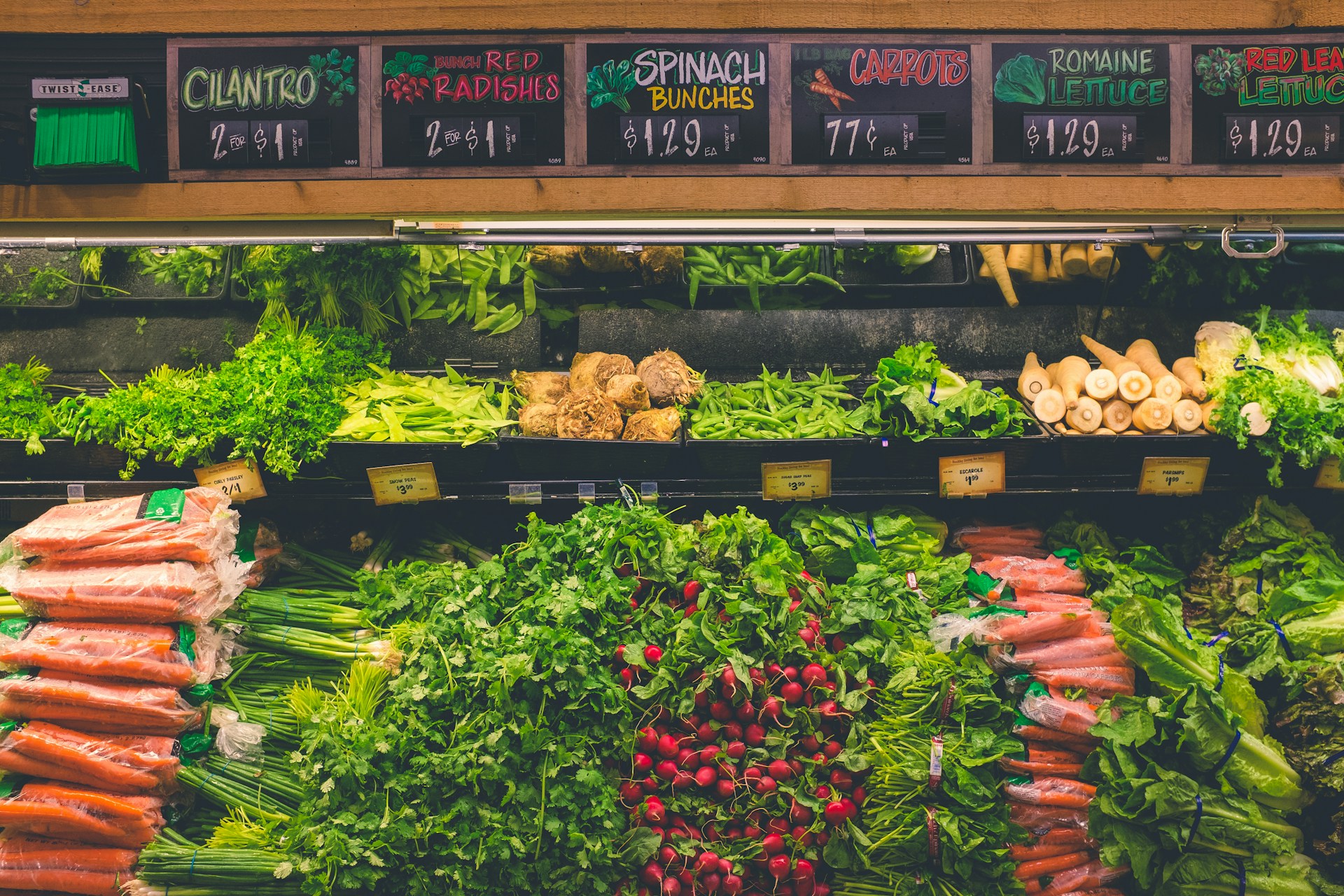In the complex world of food supply and logistics, one particular aspect stands paramount: cold chain management.
It is an aspect that demands constant vigilance, as well as rigorous precision, to ensure the transportation of perishable goods, especially produce, from one point to another.
However, this process is fraught with numerous challenges, ranging from resource-intensive practices to logistical issues.
The repercussions of these can be far-reaching, impacting not just the quality of the distributed produce, but also raising sustainability concerns.
Hence, these obstacles necessitate innovative and effective solutions.
In this article, we aim to highlight these pressing issues, explore their implications, and investigate potential mitigation strategies.
Contents
- Cold Chain Management Challenges & Solutions In Produce Distribution
- 1. Challenge: Inconsistent temperature control.
- 2. Challenge: Power outages. Solution: Backup power supplies{{DOT}}
- 3. Challenge: Inadequate vehicle insulation. Solution: Enhanced insulation materials{{DOT}}
- 4. Challenge: Power Outages
- 2. Challenge: Power Outages. Solution: Backup Power Supplies{{DOT}}
- 6. Challenge: High energy costs. Solution: Invest in energy-efficient equipment{{DOT}}
- 7. Challenge: Inadequate vehicle insulation
- The Bottom Line
Cold Chain Management Challenges & Solutions In Produce Distribution
1. Challenge: Inconsistent temperature control.
One of the significant challenges in cold chain management in produce distribution is achieving and maintaining consistent temperatures.
The integrity of the produce quality largely depends on the consistency of temperature during transportation and storage.
Any slight fluctuation in the temperature for a prolonged period can lead to a rise in the spoilage rate, which culminates in massive losses in revenue.
Inconsistent temperature control affects not only the shelf-life of the produce, but also compromises their taste, texture, and overall quality, making them unappealing to consumers.
Inadequate and outdated refrigeration systems often contribute to inconsistent temperature control.
Produce including fruits, vegetables, dairy, and meats all require specific temperatures and humidity levels to maintain their freshness and quality.
It’s a complex task to deliver each product under its required conditions when you transport diverse products together.
This complexity is compounded further when refrigeration systems are unable to precisely monitor and control the temperature and humidity within the storage and transportation containers.
A solution to this immense challenge lies in the incorporation of new and advanced refrigeration technologies.
These technologies, equipped with automated temperature control mechanisms and precise temperature monitoring systems, are able to maintain a consistent temperature, regardless of external fluctuations.
Advanced refrigeration technology does not just maintain uniform temperatures within storage units; it also can adjust temperature zones according to the specific requirements of each type of produce stored in the same compartment.
Some advanced refrigeration technologies utilize Artificial Intelligence (AI), which predict temperature variations based on external factors, providing pre-emptive control before any significant fluctuation occurs.
Another solution is regular servicing and calibration of refrigeration equipment to guarantee they are in top performance condition.
The investment in advanced refrigeration technologies not only increases the shelf-life and quality of produce, but also aids in driving down energy costs, thus, maximizing profits.
Embracing this technology marks a significant stride towards overcoming the challenge of inconsistent temperature control in cold chain management.
2. Challenge: Power outages. Solution: Backup power supplies{{DOT}}
Any distribution industry, including produce distribution, is highly dependent on constant power supply.
Power outages can inherently disrupt operations, affect the product quality, and even cause financial losses.
The cold chain management in the produce distribution industry is particularly susceptible to power outages as it requires continuous refrigeration.
Without stable power, maintaining the required temperature for produce can be quite challenging, leading to product wastage.
That’s why, an effective solution to this key challenge is investing in backup power supplies.
They ensure that the cold chain continues running seamlessly even during unexpected power outages.
When considering backup power supplies, it’s important to take into account the energy requirements of your cold chain operations.
The capacity of your backup power supply should be adequate to maintain the cold chain’s operations for a reasonable amount of time until main power is restored.
In some cases, it might be beneficial to have more than one backup power supply or a mix of different types of power sources, like batteries, generators, or even solar power.
Moreover, as part of your cold chain management strategy, regular service and maintenance of these backup power supplies is essential to ensure their optimum performance when required.
It could prove disastrous if you find out that your backup power supplies are not working or out of fuel during an actual power outage.
At the same time, having a power outage response plan could further minimize the impact of power disruptions on your operations.
Regular drills and reviews of the plan can help to make sure that your staff knows exactly what to do during a power outage.
By implementing backup power supplies and having a solid response plan, you can turn the challenge of power outages into a manageable aspect of your cold chain operations.
Thus, ensuring the integrity of your produce, minimizing wastage, and maintaining the efficiency of your operations.
3. Challenge: Inadequate vehicle insulation. Solution: Enhanced insulation materials{{DOT}}
In the world of produce distribution, the effect of inadequate vehicle insulation cannot be overlooked, as it poses major challenges to cold chain management.
Fruits and vegetables that are heat-sensitive can lose their freshness if the vehicle transporting them does not have sufficient insulation to maintain optimal temperature.
Because of this, food safety and quality are compromised, leading to customer dissatisfaction and financial loss for the business.
Over time, inadequate vehicle insulation can result in significant operational costs, as produce that goes bad due to unsuitable temperatures is discarded, resulting in waste.
Poor vehicle insulation can lead to an increase in food waste and can result in financial losses for the business, jeopardizing the cold chain.
This problem can be efficiently tackled by using enhanced insulation materials in the vehicles used for transportation. Advanced materials designed for improved insulation can effectively maintain the necessary temperatures required for different types of produce.
These materials, when integrated on the walls and floors of delivery trucks, can prevent external temperatures from affecting the inside of the vehicle, ensuring consistent temperatures are maintained regardless of outside conditions.
Furthermore, enhanced insulation can also help in saving energy. By preserving the cold temperature inside the vehicle, the refrigeration system does not have to work doubly hard to compensate for the heat.
This functionality reduces the load on the refrigeration system and lowers the overall energy consumption of the vehicle.
Moreover, the use of enhanced insulation materials also lengthens the lifespan of the transportation vehicle.
With less strain on the refrigeration system due to efficient insulation, the vehicle’s working durability can significantly increase, leading to cost savings on maintenance and repairs.
Ultimately, the solution of incorporating enhanced insulation materials not only helps in overcoming the challenge of poor insulation, it encourages energy efficiency, cost-effectiveness, and aids in maintaining the high quality of produce throughout the journey.
As a result, both customers and the business benefit from the assurance of fresh, safe, and quality produce delivery, thereby reinforcing trust and satisfaction.
In sum, the challenge of inadequate vehicle insulation is vast, but the solution of enhanced insulation materials holds remarkable potential in overcoming this hurdle in produce distribution.
4. Challenge: Power Outages
In the world of cold chain management for produce distribution, a reliable power supply is more than just a necessity–it’s absolutely critical.
When we’re dealing with products that need to be kept at specific, controlled temperatures to avoid spoilage, an interruption in power can spell disaster.
Power outages can either be due to a failure in the grid, inadequate power supply, or even natural disasters, all unpredictable and uncontrollable.
This is a challenge since these circumstances can damage the produce, leading to significant loses, both financial and in terms of customer trust.
For companies engaged in cold chain management, the big question usually is: how can you manage power outages effectively to avoid these losses?
The answer lays in proper planning, innovative thought, and investing in backup power supplies.
Backup power supplies, such as diesel generators or UPS systems, can provide electricity during a power outage, ensuring that refrigeration systems do not shut down.
By doing so, it’s possible to maintain the optimal temperature for produce preservation, which is the fundamental requirement of any successful cold chain operation.
However, it’s not enough to just buy and install backup power supplies.
These systems need to be checked and maintained regularly to make sure that they are always ready for deployment during a power outage.
Welcome steps could also involve setting up protocols and procedures for when a power loss happens, such as having staff trained to respond swiftly and accurately to ensure a smooth transition to backup power.
Another aspect to consider is the integration of energy management systems that can predict possible power overloads and mitigate them through proactive load shedding.
While these steps may require an initial investment, they certainly pay off in the long run by preventing damage to the produce and ultimately, saving money.
Therefore, the challenge of power outages in produce distribution could be well tackled by effective planning, regular training of staff, and investing in reliable backup power supplies.
The good news is that with the advancements in technology and industry knowledge, this is a challenge that is possibly getting easier to manage over time, allowing businesses to ensure that their fresh produce is always delivered in top condition.
2. Challenge: Power Outages. Solution: Backup Power Supplies{{DOT}}
Power outages pose a significant challenge to cold chain management, especially in produce distribution, which requires consistent low temperatures to maintain product freshness.
When a power outage occurs, the refrigeration systems within cold storage warehouses and refrigerated transport vehicles are compromised, leading to potential product loss.
The risk increases exponentially in instances of prolonged outages, which can have devastating effects on inventory, affecting not only business operations but also trust and reliability among consumers and partners.
In light of the financial and reputational costs associated with power outages, it becomes apparent that an effective solution needs to be put in place. The best solution to counter such a challenge in cold chain management is the integration of backup power supplies.
Backup power supplies exist as a form of assurance, designed to kick in immediately once the primary power source fails.
This ensures that there is no downtime in refrigeration, thus maintaining the integrity of the cold chain and reducing the risk of spoilage and waste.
Having a backup power source allows for business continuity in the event of an outage and provides the necessary time to rectify any issues with the primary power source.
It guarantees the desired temperature consistency, crucial for produce distribution, thus safeguarding the quality and shelf-life of perishable products.
Considering the diverse range of backup power solutions available in the market, choosing the right fit for a company’s unique needs and operations is paramount.
Among the popular choices are generators, UPS systems and even renewable energy sources, like solar power.
Generators are the traditional go-to solution, capable of providing significant power for extended durations, and are ideal for larger operations.
On the other hand, UPS systems provide instant, uninterrupted power supply for a brief period, useful for covering short-term power disruptions or allowing time for generators to kick in.
Solar power, meanwhile, is an eco-friendly option, reducing reliance on traditional energy supplies, and offers considerable savings in long-term operational costs.
Overall, integrating a robust backup power system is a strategic, forward-thinking measure that ensures resilience in the face of unpredictable power disruptions.
As the effects of climate change grow increasingly apparent, businesses need to adapt and prepare to maintain operations, irrespective of external disruptions. In doing so, they not only protect their inventory but also ensure their reputation for reliability in a competitive market.
6. Challenge: High energy costs. Solution: Invest in energy-efficient equipment{{DOT}}
One of the significant challenges facing cold chain management in the produce distribution sector is the high energy costs associated with maintaining suitable temperatures for perishable goods during transportation and storage.
These costs can form a considerable portion of the operational expenditure, thereby reducing the overall profitability of the venture.
More often than not, traditional cooling systems and equipment are known to consume substantial amounts of energy, which is a primary factor contributing to these escalating costs.
However, there is a solution to this problem – investing in energy-efficient equipment.
This involves the adoption of advanced technology and equipment tailored to decrease energy consumption during the cooling process, subsequently leading to lower energy costs.
Energy-efficient equipment uses cutting-edge technology that ensures the cooling process is conducted more efficiently, with a reduced amount of energy expenditure.
This could include updates to the refrigeration units themselves, or to other related systems like HVAC systems or insulation parameters.
Energy-efficient refrigeration systems can deliver the same level of cooling without demanding the high-energy input that traditional systems necessitate.
This solution does not only lower energy costs but also promotes environmental sustainability by reducing the carbon footprint of the operation.
Through making a solid investment in energy-efficient equipment, companies can enjoy the dual benefits of reduced operating costs while contributing positively to the environment.
The implementation of energy-efficient technologies in cooling systems is not an instantaneous solution, but a strategic process that all players in the produce distribution sector must consider embracing.
Installation and maintenance costs of energy-efficient systems may be initially high, but the long-term savings in energy costs make it a worthwhile investment.
Therefore, the decision to invest in this equipment should be viewed as a long-term strategy aimed at achieving sustainable profitability through cost reduction.
Companies need to research and identify the most suitable energy-efficient systems tailored to their unique needs to ensure maximum return on investment.
It is evident that high energy costs greatly hinder the effectiveness and profitability of cold chain operations in the produce distribution sector.
However, with the availability of innovative energy-efficient technology, companies have a viable solution that not only addresses this challenge, but also advances their sustainability agenda.
7. Challenge: Inadequate vehicle insulation
Among the many challenges faced in cold chain management, one prominent issue is inadequate vehicle insulation.
When it comes to the transport of perishable goods, ensuring proper insulation is critical to maintain the quality and safety of the products.
Unfit or poor insulation could lead to fluctuations in temperature, which may adversely affect the freshness and quality of produce.
Variations in temperature may promote bacterial growth and spoilage, thereby, compromising the efficacy of the cold chain process.
This situation could not only result in significant financial losses for businesses but also tarnish their reputation in the market.
Furthermore, frequent temperature changes inside the storage compartments can unnecessarily increase energy consumption due to constant cooling and reheating.
This can result in increased carbon emissions and lead to higher operational costs.
To avoid these issues, companies should consider using enhanced insulation materials.
A range of innovative insulation systems are now available that can provide superior thermal performance and ensure constant and reliable temperature control.
These systems are made of advanced materials that work by minimizing heat transfer through their structure.
They are also designed to be lightweight and easy to install, making them more practical for transport vehicles.
Moreover, choosing the right insulation material and design can also increase the lifespan of transport vehicles, reducing the need for frequent replacements or repairs.
In addition to using high-quality insulation materials, it is also essential to ensure regular maintenance and inspection of the insulation system.
This is crucial to detect and fix any damage or wear that could affect its performance and cause temperature deviations.
In essence, enhancing vehicle insulation is not just about improving the quality of produce transportation but also about optimizing energy use and reducing environmental impact.
With the right materials and regular maintenance, companies can combat the challenge of inadequate vehicle insulation and ensure seamless and efficient cold chain operations.
The Bottom Line
Effective management of the cold chain is of paramount importance to ensure the integrity and safety of temperature-sensitive materials.
To address common challenges, certain strategies can be implemented.
Incorporating advanced refrigeration technology can help regulate temperature inconsistencies, whereas backup power supplies can mitigate the problem of power outages.
Equipping the vehicles with enhanced insulation materials can prevent inadequate insulation, while regular staff training can correct improper handling during transport.
Integration of IoT tracking systems can enhance traceability, alongside investing in energy-efficient equipment to manage high energy costs.
For poor loading and unloading practices, implementing strict operational procedures can prevent mishaps.
Overall, the constant evolution and adoption of these preventive measures can ensure the optimization of cold chain logistics, improving the quality and safety of the transported goods.




